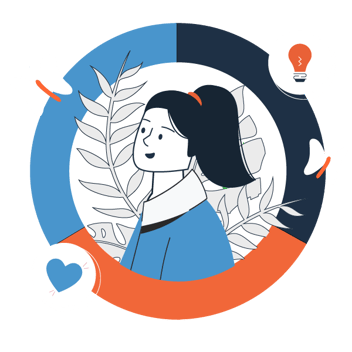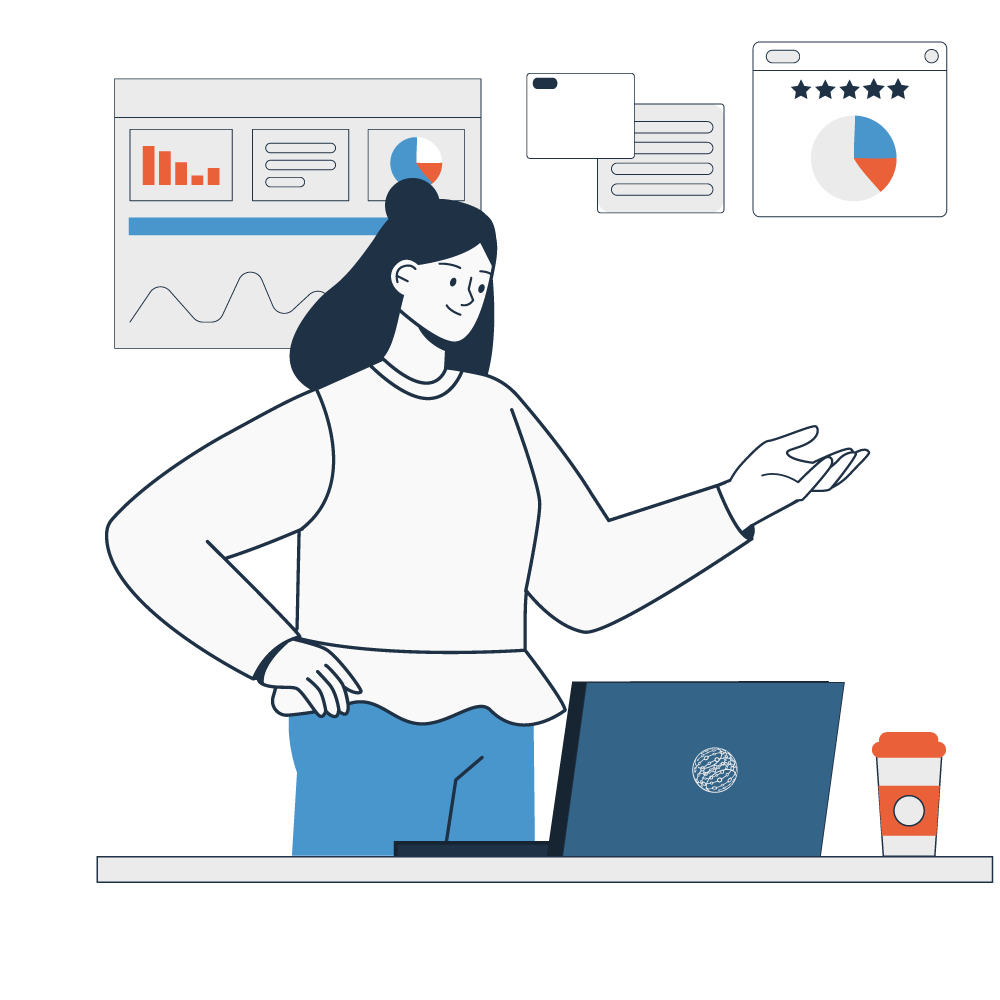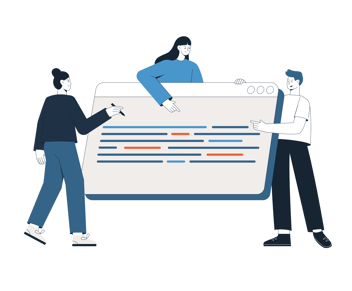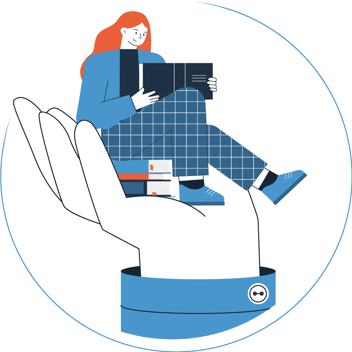
In today's digital age, technology has become an integral part of our daily lives. However, its impact on education remains a complex and multifaceted issue. Despite the ubiquity of digital devices, a study by the Australian Institute for Teaching and School Leadership (AITSL) revealed that many students are text-savvy but not tech-savvy. They struggle with basic computer tasks and lack the critical thinking skills necessary to leverage technology effectively.
This suggests that simply integrating technology into classrooms is not enough. To truly harness its learning potential, educators must prioritise the development of digital literacy and critical thinking skills among students. While some may advocate for removing technology altogether, such a reactionary approach misses the mark. The real challenge lies in addressing the underlying issues of student distraction and disengagement.
Understanding EdTech
Investopedia provides a clear definition of the term EdTech, which is a portmanteau of "education" and "technology", referring to hardware and software designed to enhance teacher-led learning in classrooms and improve students' education outcomes. Some examples include interactive projection screens, whiteboards, in-classroom tablets, education software like School Management Systems, Learning Management Systems and Learning Analytics Software, Massive Open Online Courses (MOOCs), Augmented Reality (AR), and Artificial Intelligence (AI).
The COVID-19 pandemic underscored the significance of online learning, a trend that has been further accelerated by the rise of generative AI chatbots such as ChatGPT, Gemini, and Copilot. Consequently, EdTech is poised to revolutionise the education sector, enhancing learning experiences and empowering students.
The Current State of Digital Literacy
According to the aforementioned study by AITSL, educators were aware of the limited digital literacy of many students. They reported that:
- Students lack an in-depth understanding of the digital technologies they use.
- They can access apps but cannot perform basic search functions or computing functions.
- Many students are passive content users; they are consumers but not creators.
In 2022, only 55% of Year 6 students and 46% of Year 10 students reached their respective proficient standards for NAP–ICT Literacy. Concerningly, 13% of Year 6 students and 5% of Year 10 students at level 1 have trouble with very basic digital skills, such as opening email attachments, copying and pasting a column in a spreadsheet, or finding specific information on a webpage.
Purposeful Use of Technology in Classrooms
While technology is prevalent and has altered the experience of students, teachers, and school staff, there's little to no evidence of the benefits of technology adoption on improvements in school effectiveness. However, this doesn't mean there are no benefits to using technology in classrooms to improve student outcomes.
The key lies in the purposeful use of technology. As noted in a 2021 study by Yeung et al., "Technology is neither beneficial nor harmful for learning when used primarily as a means of presenting information (e.g., information viewed on a computer screen vs. on paper) but can be beneficial when it involves unique affordances that leverage effective learning principles."
21st-Century Skills: Preparing Students for the Future
As we embrace technology in the classroom, it's crucial to focus on developing the skills students need for success in the modern world. The Queensland Curriculum and Assessment Authority (QCAA) has identified seven key 21st-century skills that are essential for today's learners:
- Critical Thinking: The ability to analyse, evaluate, and draw conclusions from information and arguments.
- Creative Thinking: Generating and applying new ideas, seeing existing situations in a new way, and identifying alternative explanations.
- Communication: Effectively conveying ideas and information to others through a variety of modes and mediums.
- Collaboration and Teamwork: Working together to achieve a common goal, including sharing ideas and responsibilities.
- Personal and Social Skills: Self-management, self-awareness, and social awareness, including the ability to work and interact effectively with others.
- ICT Skills: Using digital technologies to access, manage, and evaluate information, create content, and communicate with others.
- Literacy: Reading, viewing, writing, shaping, and listening in a variety of contexts and for different purposes.
These skills are not taught in isolation but are integrated into the curriculum across various subjects. By focusing on these skills, educators can ensure that students are well-prepared for the challenges and opportunities of the 21st century.
Challenges of EdTech Implementation
Despite the promising potential of educational technology, it's crucial to acknowledge the significant hurdles and concerns that arise with its implementation in classrooms.
- Equity Issues: Not all students have equal access to devices or high-speed internet at home, potentially exacerbating existing educational disparities. While most of the Australian population have access to high-speed internet, those who live in remote parts of the country face internet issues, according to the Educator. While the COVID-19 pandemic accelerated online learning, it also created a divide and catapulted many Australian families into digital poverty.
Doug Taylor, CEO of The Smith Family, sums up this succinctly, “with 1.2 million Australian children and young people growing up in poverty, many are effectively excluded from learning opportunities due to the digital divide. The digital divide is one of the most pressing educational challenges for children in low-income households. Currently, three in ten students we support through our Learning for Life program are on the wrong side of this divide." - Teacher Training: Many Aussie teachers are feeling a bit overwhelmed by the EdTech flood. It's like being asked to drive a race car when you've only ever ridden a bike. To help educators feel more confident, schools can invest in professional development programs, like the ones offered by the Australian Council for Educational Research (ACER) or Australian Institute for Teaching and School Leadership (AITSL).
- Distraction: Digital devices can sometimes hinder rather than enhance focus and learning, particularly if not properly managed.
- Privacy Concerns: When students use devices in the classroom, they're generating data. It's important to have clear policies in place to protect student privacy. A recent incident at a Melbourne University, where facial recognition technology was used to identify students, sparked concerns about data security.
- Over-reliance on Technology: There's a risk of becoming too dependent on technology, potentially neglecting important traditional learning methods and interpersonal skills. Addressing these challenges requires a balanced approach that leverages technology's benefits while mitigating its potential drawbacks.
Addressing these challenges requires a balanced approach that leverages technology's benefits while mitigating its potential drawbacks.
Leveraging Educational Technology Platforms
To effectively embrace technology in the classroom and foster 21st-century skills, many schools are turning to comprehensive educational technology platforms. Learning analytics platforms like TrackOne Studio offer a range of features designed to support both educators, students and their parents in creating a more data-informed and personalised learning environment.
Key features of such platforms often include:
- Student Dashboards: Providing a holistic view of each student's progress, including academic performance, attendance, and behavioural data.
- Data Analysis Tools: Offering insights at the individual, class, and cohort levels to help educators make informed decisions.
- Goal Setting and Tracking: Facilitating the creation and monitoring of personaliszed learning goals for students.
- Wellbeing Monitoring: Incorporating regular check-ins to track student wellbeing alongside academic progress.
- Extracurricular Activity Tracking: Recognising and recording student achievements beyond the classroom.
- Integration Capabilities: Allowing schools to combine data from various sources, including external assessments and internal systems.
These features, when used effectively, can support the development of 21st-century skills in several ways:
- Critical and Creative Thinking: By providing comprehensive data, these platforms encourage both educators and students to analyse information, identify patterns, and develop innovative solutions to learning challenges.
- Communication and Collaboration: Features like goal-setting tools and well-being check-ins can foster improved communication between students, teachers, and parents.
- ICT Skills: Regular interaction with digital platforms naturally enhances students' technological literacy and comfort with digital tools.
- Personal and Social Skills: Holistic student profiles that include extracurricular activities and well-being data help in developing well-rounded individuals.
- Literacy: Comprehensive tracking of academic performance across subjects can help identify areas where additional literacy support may be needed.
It's important to note that while these platforms offer powerful tools, their effectiveness ultimately depends on how they are implemented and used within the school community. They should be seen as enablers of good teaching practice rather than replacements for skilled educators.
Integrating Technology in the Classroom
Integrating technology into Australian classrooms can be a game-changer. But it's not just about ensuring every student has a laptop or iPad and calling it a day. Here are some tips to help you make the most of tech tools:
- Before you dive into the digital world, be clear about what you want to achieve. Is it to boost creativity, improve collaboration, or make learning more engaging? For instance, a Year 4 class at a Sydney school used iPads for creating Keynote animations in a History class.
- Your teachers need to feel confident using tech. Regular professional development sessions, like those offered by ACER or AITSL, can help.
- Teach students to be responsible digital citizens. This means understanding online safety, avoiding cyberbullying, and evaluating information critically.
- Don't just use tech for traditional tasks. Try the Flipped Classroom Model, where students watch videos or complete readings at home and use class time for discussions and hands-on activities. Teachers in Gungahlin College, ACT have successfully used this method to teach complex science concepts.
- Keep an eye on how the tech is working. Are students more engaged? Are their grades improving? If not, don't be afraid to change things up.
- Remember, tech is a tool, not a magic wand. It should complement your teaching, not replace it. Face-to-face interactions and hands-on learning are still essential.
Embracing technology in the classroom is about more than just introducing digital devices; it's about leveraging these tools to enhance learning experiences and develop crucial 21st-century skills. Learning Analytics tools like TrackOne Studio can play a significant role in this process by providing educators with the data and tools they need to create personalised and engaging learning environments.
As we continue to integrate technology into education, it's crucial to maintain a balance. Technology should support and enhance teaching and learning, not replace the invaluable human elements of education. By thoughtfully implementing technological tools and continuously evaluating their impact, we can create learning environments that truly prepare students for success in the digital age.
The key lies in aligning technologies with educational goals and using them to foster critical thinking, creativity, communication, and collaboration. When used effectively, EdTech can open new possibilities for learning, helping students develop the skills they need to thrive in an ever-changing world.




